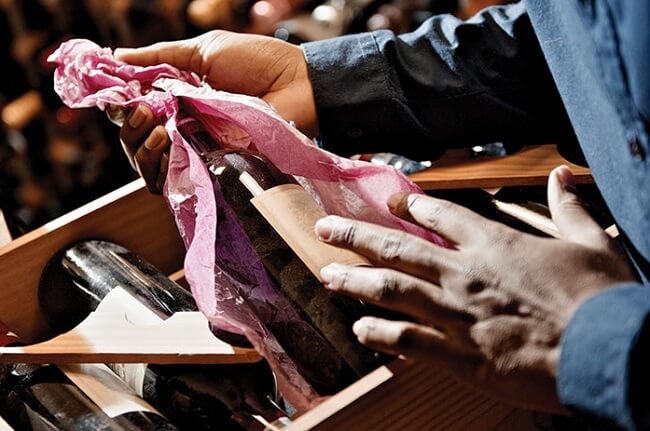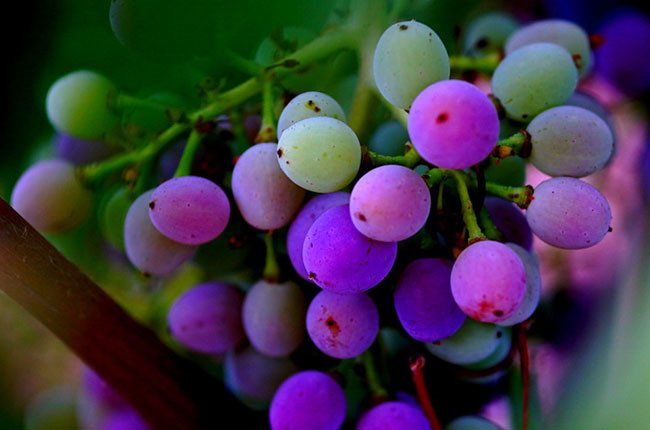In this week, let's discover another three wine "flaws". How will they affect the flavor. Are they really "flaws"?

Wine faults: Brettanomyces
‘Great Burgundy,’ Anthony Hanson MW wrote in the 1982 edition of Burgundy, ‘smells of shit. Not always, of course, but frequently there is a smell of decaying matter, vegetable or animal, about them.’ While Pinot Noir rarely smells of faecal matter these days, thankfully, it is entirely possible that at least a part of the aromatic profile that Hanson was referring to was derived from the presence of brettanomyces.
Brettanomyces (or brett, as it’s often known) is a rogue yeast which thrives in wines with low levels of acidity. Wines are particularly vulnerable to brett when the main yeast, Saccharomyces cerevisiae, has died off before fermentation has completely finished, but brett can develop during maturation too – especially when the sulphur dioxide has been used sparingly.
Once brett has established itself in a wine, it produces a cocktail of chemicals that are responsible for its characteristic aromas. Foremost among these are 4-ethylphenol (barnyards, sticking plasters), 4-ethylguiacol (cloves, smoky bacon) and isovaleric acid (sweaty saddles). At high levels, these compounds not only mask a wine’s fruit, they can also leave its finish feeling hard and dry.
Many argue that the presence of a trace of brett can create additional layers of complexity, particularly when the emphasis is on the spicy, smoky bacon end of brett’s aromatic spectrum. ‘As long as brettanomyces is not overly obvious, I think it can add complexity and interest,’ says Steve Webber, the winemaker for De Bortoli in Australia. ‘Personally, I like it in savoury, rustic red wines.’ Generally speaking, though, the presence of brett is less acceptable in delicate Pinot Noir-based wines than it might once have been.
Wine faults: Volatile acidity
Volatile acidity (or VA) is, as the name suggests, composed of those acids within a wine that can be smelled, as opposed that can be detected on the palate. The major culprits are acetic acid (which smells of vinegar) and its associated ester, ethyl acetate (an odour reminiscent of nail polish); the balance of these compounds is individual to each batch of affected wine. Like brettanomyces, the bacteria that cause volatile acidity thrive in high-sugar, low-acid environments.
Although the presence of high amounts of VA is considered undesirable, in some cases a touch of volatility is no bad thing – particularly when it comes to botrytised wines. ‘The best Sauternes are full of volatility,’ says Jan Konetzki, head sommelier at Restaurant Gordon Ramsay. ‘It adds a savoury character that helps balance the wine. Without it, sweet wines usually lack complexity.’
Volatility also has its place in the aromatic profile of certain red wines, particularly those that have spent prolonged time in barrel. This may be why VA is often (and increasingly erroneously) associated with Italian reds, particularly traditional styles of Amarone and Barolo.
VA is not restricted to Italy, of course: Chateau Musar, Lebanon’s most famous red, tends towards volatility, as do some Châteauneufs-du-Pâpe. Even that most delicate of grapes, Pinot Noir, can benefit from a trace of VA, which in small doses can enhance its floral tones. The presence of VA in dry white wines, however, is widely considered an out-and-out fault

Wine faults: Undeniable flaws
A chemical by the name of 2, 4, 6- trichloroanisole, or TCA, cops most of the blame for cork taint. The truth is there’s a whole family of compounds that can cause a wine to smell musty, or at the very least mask its fruit.
If you thought you might have detected an aroma similar to root vegetables in recent vintages of Loire Sauvignon Blanc or Muscadet, you’re not wrong. Vineyards in this region (and parts of Chablis, Bordeaux and Beaujolais) have been affected by geosmin, an earthy character derived from fungal infections.
Although some wines – particularly light, crisp whites such as Vinho Verde and young Rieslings – have a prickle of spritz on the palate, no still wine should contain bubbles. If yours does, the chances are that the wine still had some residual sugar and yeast left in it at the time of bottling, and is now refermenting in the bottle.
Translated by ICY
All rights reserved by Future plc. No part of this publication may be reproduced, distributed or transmitted in any form or by any means without the prior written permission of Decanter.
Only Official Media Partners (see About us) of DecanterChina.com may republish part of the content from the site without prior permission under strict Terms & Conditions. Contact china@decanter.com to learn about how to become an Official Media Partner of DecanterChina.com.






Comments
Submit